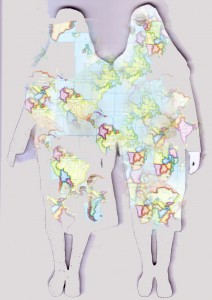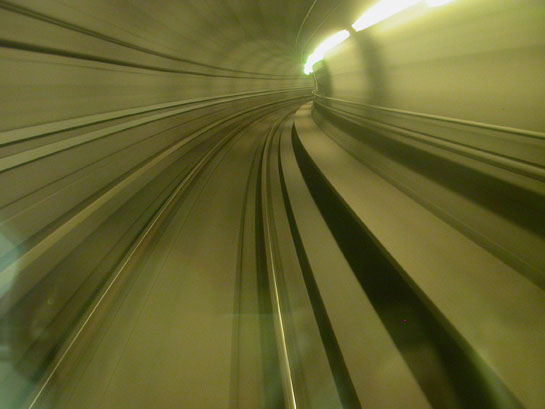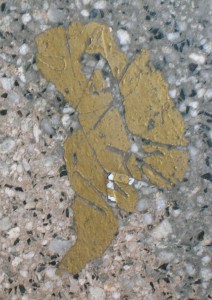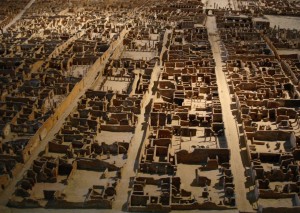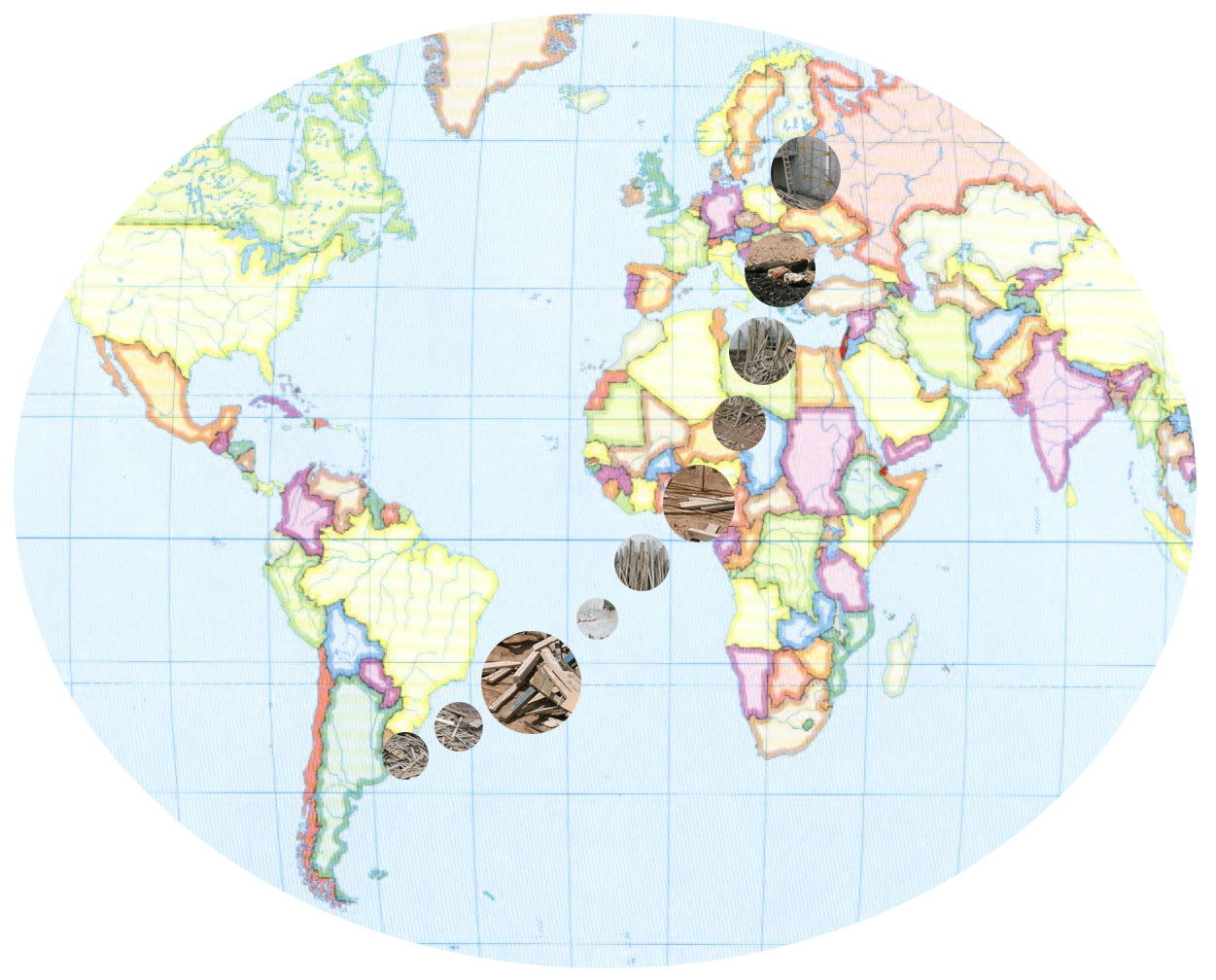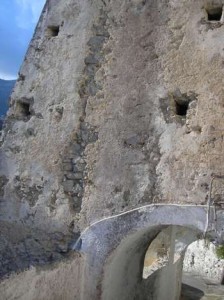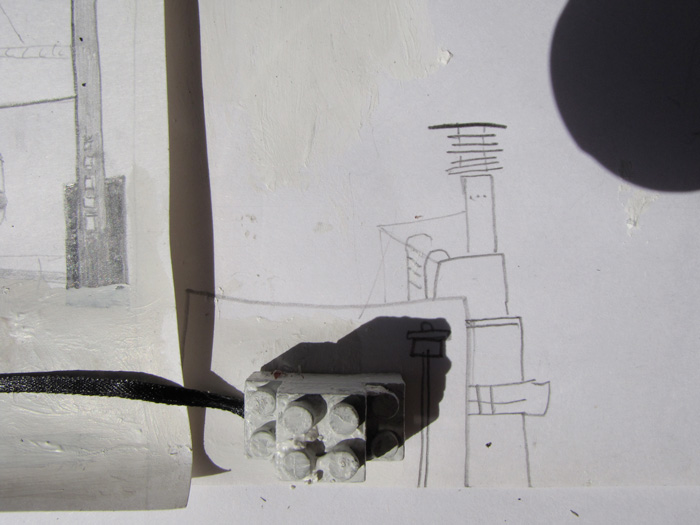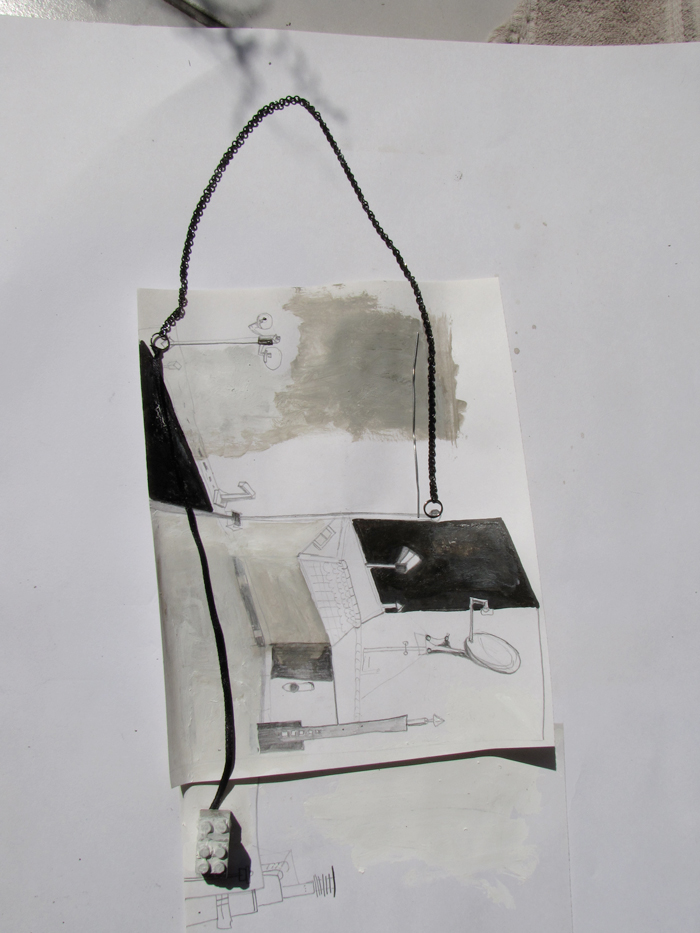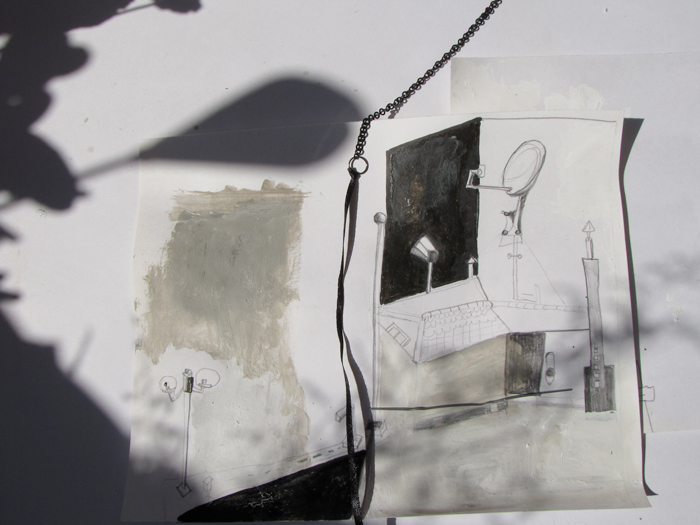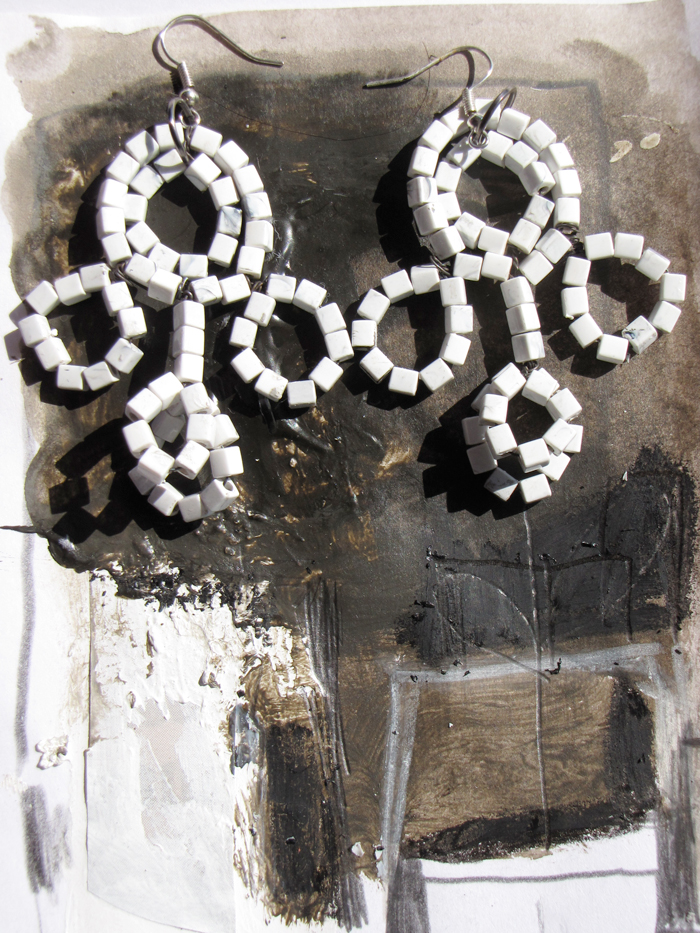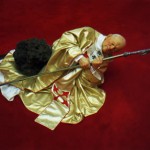Dear Claudia and Nano
I am glad to know that you feel at home in Santiago. As I read on your website you’re interested in identity, local or global, in your work. It is an aspect that also important for my work. Identity and migration are linked to each other. For example Italian secondos (second generation immigrants – they are born in Switzerland and their parents have emigrated formerly) are called Italians in Switzerland and Swiss in Italia. Immigrants are a constant topic in the media of Switzerland. Some Swiss feel threatened and think that if one minarett is built in Switzerland, the country is going to be islamic very soon. How is the situation in Chile. If there are immgrants, where do they come from? Where do Chilean emigrate to?
Food has also a lot of identitygiving aspects (man ist, was man isst – you are, what you eat) or (was der Bauer nicht kennt, frisst er nicht – what the farmer doesn’t know, he won’t eat): let’s take the potato for example. It has its origins in South America (Chile, Peru, Bolivia). It came to Europe around 1500. In Switzerland the Rösti, made from potatoes is now a national dish. Two months ago I attended a dinner made by the artist Arpad Dobriban (www.arpad-dobriban.de) with the topic: the endless migration to the west – it was about aliment-itinarys. What are national recipees of Chile?
The following is a picture of a work of Fischli/Weiss, it’s called “Der Unfall” (the accident) made with cervelat, a tipical Swiss sausage (made with brasilian cowgut).
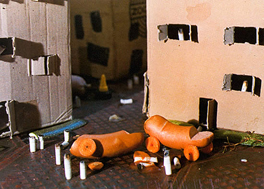
Bon Appétit!
Natalie
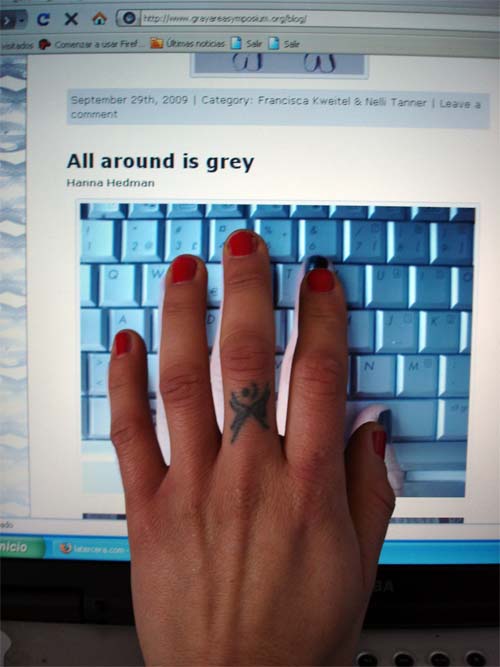 A boundary/border/frontière exists when territorial systems identified by their own sets of norms (cultural, legal, etc) confront one another. A boundary/border/frontière exists when territorial systems identified by their own sets of norms (cultural, legal, etc) confront one another.
(a quick post)
Maria Constanza Ochoa
Hi…
Sorry that it took me more time to answer, but this week i got Cold and i was not so well…anyway…its part of this “big project”.
When i saw the pictures of the walls that you sent me, my first impresion was the feeling to want to go behind them and discover someting…maybe beautiful, or maybe nothing…but is like MISTERY or SECRETS behind them, some of them can be decorated very nice and like this you can forget what really is, but is still a wall that keeps something to discover.
I like them a lot, makes me thing in the people, each person has inside a lot of secrets and misteries that probably they have given shape to our personalities and behavoir; and is exactly like this as i see jewellery, each piece has so much information, and inside so much secrets to discover.
I enjoy when every one that it looks a piece, wants to discover that secret and makes their own conclusion…because for me at the end the piece is for them to look, to interact, to discover.
Take Care
Connie
wishing you good luck for your artist in residency. I would really enjoy to join you there.
Kisses, Leonor
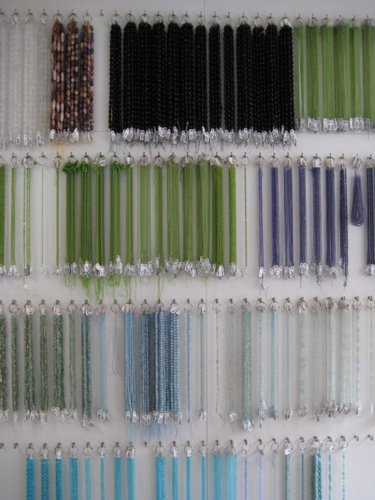 I-O, LH 2008
Finally ready to start the tour with this blog. Several exhibitions in the last month kept me away from starting – sorry for my late contact.
I am born in the north of Germany, moved five times before I landed in Amsterdam 12 years ago.
Here I still live and work – but Iove to travel around in universe.
Looking forward to meet you here in the wwwspace.
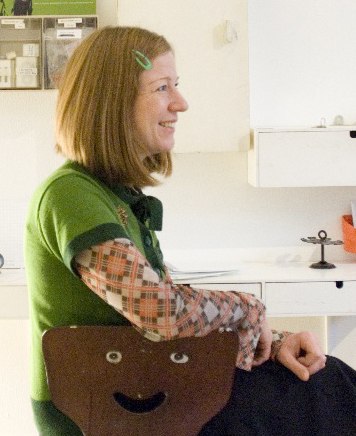
Sebastian Buescher
Hello Dani…
I was on a little trip to the UK since last week. Now I am back where I was before. I bought a book called Universe on the ferry from Calais to Dover, depciting images from cosmos, planets, stars and nebulae. Amazing colours swirl around on every photograph, encaplsulating an ancient magic and mystery of the universe that makes me feel so small, tiny, microscopic. I had to buy this book because of the image I posted to you earlier last month, to which you posted the fetus and the planets. We are so small that it nearly makes me laugh when I think about the problems that humans face. We inhabit the Earth, moslty asleep and ignorant, confused, scared and I think that we have no clue at all. At least I don’t have a clue. No clue.

…………….
Dear José The thought of a moment is indeed a good title and it can be applied in a broader sense to my work.
Since the first years of my practice I realise it wasn’t enough to play around with the form/material/usage without a previous purpose different than simply ornamentation. I did spent hours and hours during my studies trying a patch work but soon this exercise did lack meaning to me.
I am fascinated by the human body and the small scale attracts me. These two elements seemed to form a strong conjunction in my decision to follow jewelry. I keep finding challenging the exercise of constraining meaning in such small objects and then use them as “psychological mirrors” of a person, group or society.
Moreover this relation small/large replicates universally and once more I see myself fascinated by the psychological duality this represents. Humans always needed to scale things and preferably at hand size.
It took me years of experiments to realise my relation with jewelry is that of mental correlation rather than material. Materiality is indeed great part of the process but not the leitmotiv. I am very focus on stretching my thoughts about specific concerns. I am keen in scrutinise some facets of the human psychology and defy the borders of perception.
Jewelry is controversial and therefore an interesting open subject.
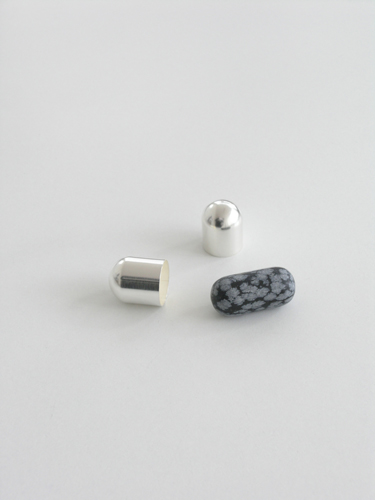 überstein, LH 2008
Carla Castiago
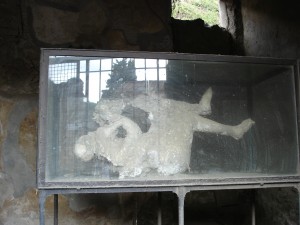
What makes Argia different from other cities is that it has earth instead of air. The streets are completely filled with dirt, clay packs the rooms to the ceiling, on every stair another stairway is set in negative, over the roofs of the houses hang layers of rocky terrain like skies with clouds. We do not know if the inhabitants can move about the city, widening the worm tunnels and the crevices where roots twist: the dampness destroys people’s bodies, and they have scant strength; everyone is better off remaining still, prone; anyway, it is dark. From up here, nothing of Argia can be seen; some say “It’s down below there,” and we can only believe them. The place is deserted. At night, putting your ear to the ground, you can sometimes hear a door slam.
In: Invisible cities, Italo Calvino
Terhi Tolvanen
I saw your pieces now on the website. Se vende, does it mean for sale?
I would be curious to know how you started to make jewelry, as being architect? It is quite a different dicipline. And do you still work as architect?
greetings, Terhi
Thelma Aviani
Hi Luzia,
How are you.?
I decided to post ramdom images and comments on things I find curious .
So, this is a “Canela de Ema” tree. It is part black because the “Cerrado” vegetation we have here often buns itself up as a way to renovate its system. In the dry season’s peak when the heat finds the right spot there is ignition and the fire begins! Then the rain comes and the trees remain like that for a while. They survive as long as the fire doesn’t reach their core.
Have a good week,
Thelma
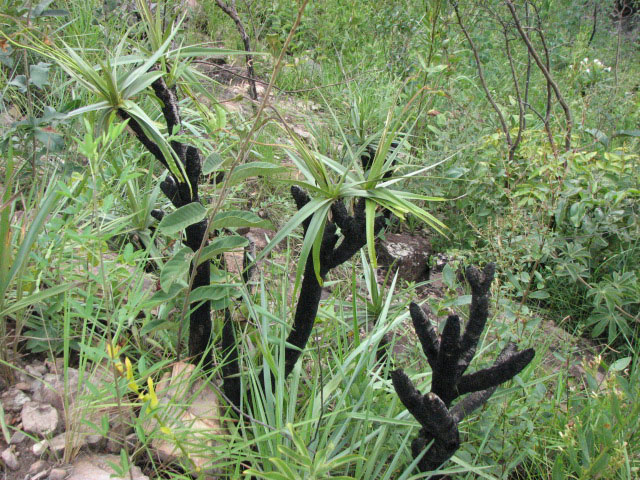
Our contemporary Latin America is the product of a complex historical process that, for the last five hundred years or so, has been marked in various extents by foreign influences. Artists have certainly chewed on this for the last five hundred years or so… Latin Americans have reacted to foreign influences of the most diverse ways: from the both rebellious and humorous way in which the natives of Mesoamerica hide their symbols behind the imposed Christian ones to the brazen Pirateria (or piracy) that shines in street markets all over the continent… and everything in between.
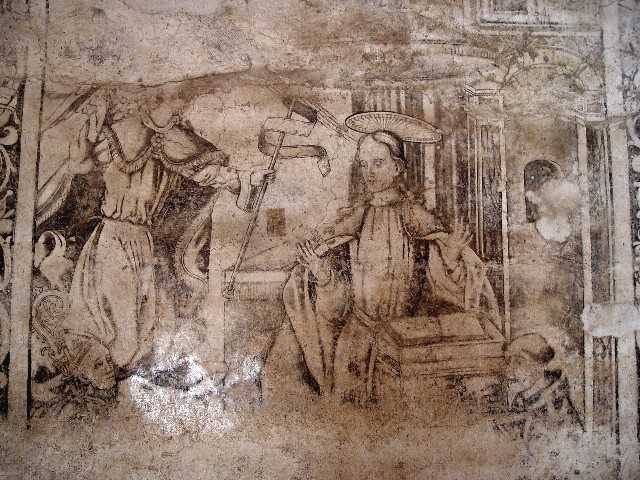
Prehispanic motives hidden in the decorations of the priests’s clothing in this mural paining at Convent of San Francisco de Acolman, Mexico.
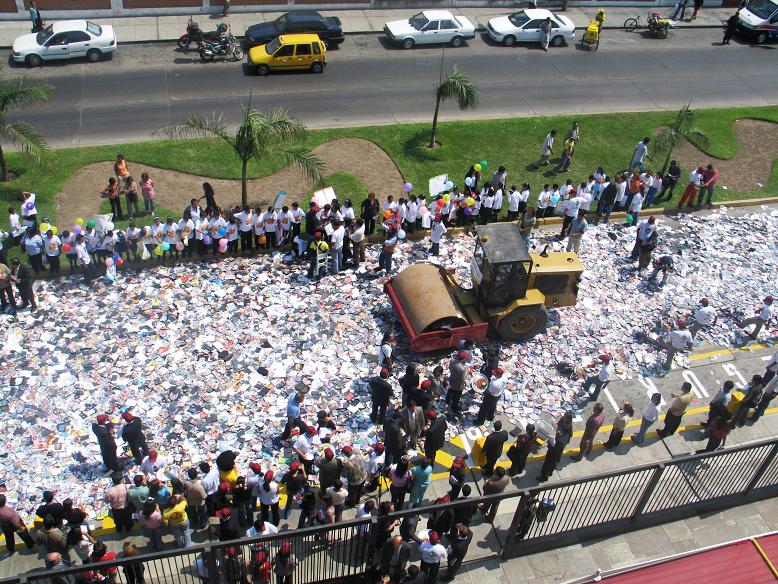
Public destruction of 2 million copies of pirate CDs and DVDs, Mexico City, 2007
Jewelers react accordingly…
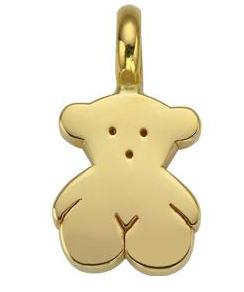
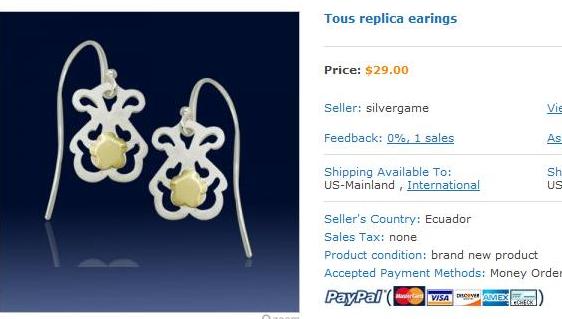
At the Iberjoya fair in Madrid, a Mexican jeweller was apprehended in her own booth for presenting a pirate collection of the dreaded Tous bears. The woman had the boldness to present her cheap copies in the mere country where the original brand was created (I really had to laugh about this!)
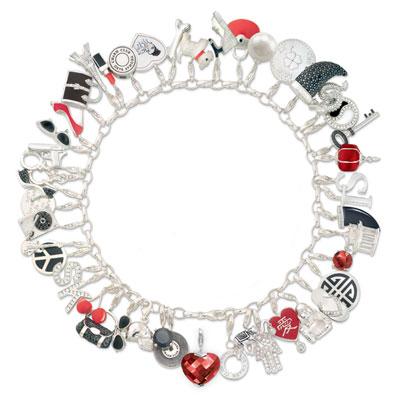
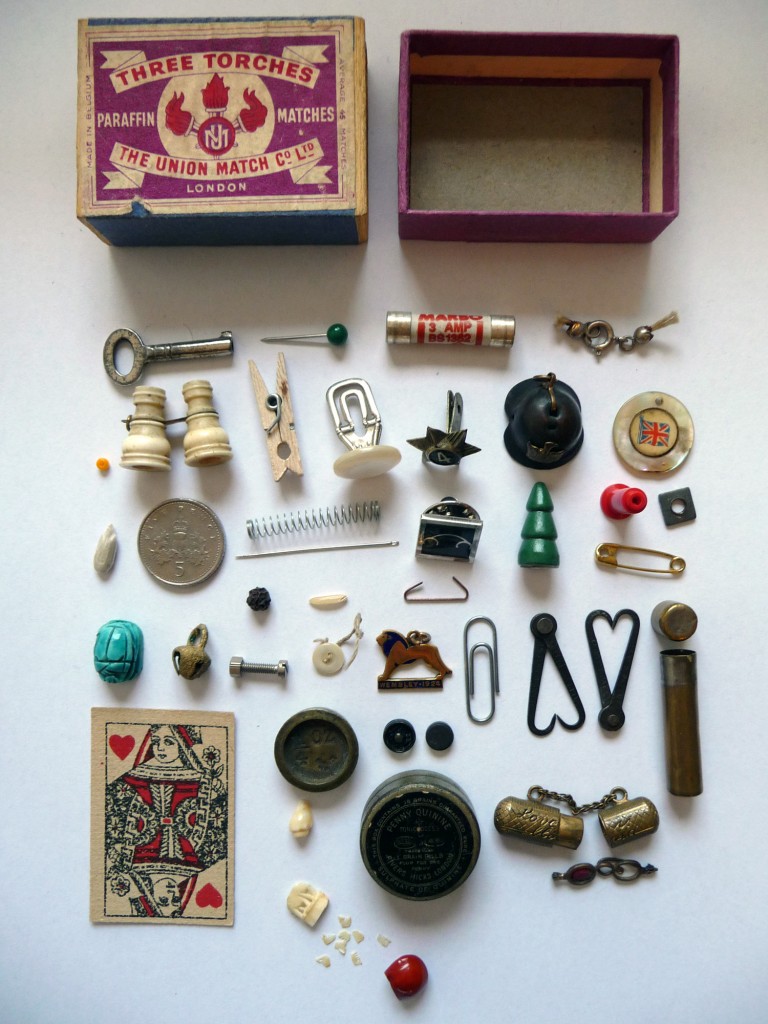
In 2008, Cuban artist and jeweller Jaime Alonso, launched his line ‘Pandora de los Pobres’ (or Pandora for the Poor): 100 matchboxes collected over 20 years, full with all kinds of small objects, also collected in as many years. Every object in each box relates to the others through Alonsos’s humorous discourses on a array of topics, all related with the Cubanness of the artist. All the object can be then attached to a chain, ring, bracelet that come practically packed with each matchbox.
Art is informed and influenced by virtually every single thing that surrounds us. Past and present, foreign or local, real or imaginary. The same can be say of jewellery. Art and jewellery become fields where discarded object and ideas are hungrily consumed and then digested or regurgitated by artist from around the world… they reappear transformed, twisted, multiplied, reinvented or sometimes, sadly, simply copied… A rich topic that Jose Manuel has placed on the table!
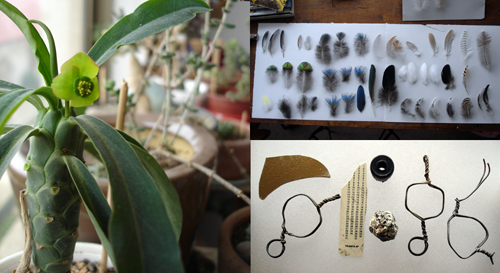 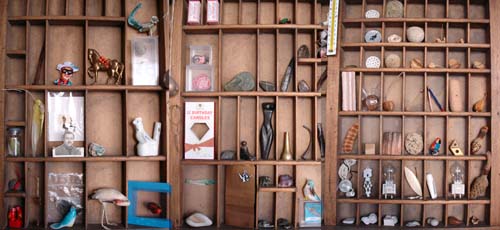
Hi Andrea: I really like what you said, you read my mind! Magnets catching indistinctive every kind of objects, without any intention. But we are very selective, that’s what reveal our personality and needs.
You asked me if I’m a ‘collector’, and if so what kind of things I collect? And yes, unfortunately, but a “disperse” collector. I use to gather more than collect.I love small objects, old ones, discarded, rusty, forgotten ones. I have a lot of boxes with feathers, bones, hair, buttons, old pictures, eggs, insects, broken porcelain, plastic objects,( I think that’s what most of all, as jewelers do). ….maybe my set of succulents and cactus is my only formal collection.
I have been writing 19 copybooks in this last 6 years with drawings and notes…..but, something that I construct can be a collection? Can I collect my thoughts in copybooks?
The activity of collecting includes seeking, locating, acquiring, organizing, cataloging, displaying, storing, and maintaining whatever items are of interest to the individual collector. An alternative to collecting physical objects is collecting experiences of some kind, through observation or photography.
Agregar, reunir, acumular, acopiar, recolectar, recoger
It’s taken me awhile to get back to you with a response regarding your wondering what the crossings (or connections) are between crafts, art, and design that make jewelry more far-sighted than visual arts and also so detached from design in the traditional sense of the word. I’m going to partly cite you and also supplement it according to how I understood what you meant to convey, as well as adding my thoughts to it.
As you said, once Art with a capital ‘A’ came onto the scene those making it – the artists – were driven into (training) institutions to learn what was considered as art and what the ‘proper’ way of creating it was. This in contrast to the first hand-made objects that mainly ‘celebrated’ nature (an inexhaustible laboratory of inspiration) or their religious-mythological beliefs.
Design in products that were meant for consumption followed later, pretty much free of conceptual or religious aspects and geared more to the aesthetic. Even later, when the Bauhaus in Germany and De Style in the Netherlands for example set down very clear new parameters regarding design that created a totally new aesthetic and idea about the look of consumption objects. Thus was born ‘Design’ based on clear visual aspects relating to function and functionality. Art which later became more and more conceptual and worked with meaning stood across from it. And on the side stood the crafts which created functional things through more time-consuming hand labor but mostly without the strictness of the clear visual aspects of ‘Design’ (assembly/factory work). Jewelry as embellishment of the body, for a long time meandered along the different styles of the times but not really adhering to any of them properly.
I’m not an historian, so what I am saying is without claim to being the truth, on the contrary it’s only a reflection of what I observe and feel. As I see it, things started becoming fascinating once the aspects of design, crafts, and art started intermingling and boundaries blurring. Of course that opened some new cans of worms and the discussions are ongoing still. Such as Art not viewing ‘decorative’ applied arts as equals, or design not searching for association with crafts and so forth. I don’t want to go into that – it’s an endless loop.
Personally, I often find wonderful surprises in design or conceptual crafts. Quite often I experience the thinking behind design/conceptual crafts extremely witty, or with interesting references to the traditional in a very contemporary manner, or being critically reactive to society/life, and this often exceeding what I notice in Art. Again, this is just my personal opinion and taste!
Students of crafts departments at good art schools are conveyed the necessity of having a good basic knowledge of art history and contemporary art besides being proficient in their own area of expertise. Of how many painting, sculpture, or new media students/artists can the same be said regarding a knowledge of any field of crafts? It is said that knowledge is power, so maybe that helps empower the creative process leading to some very outstanding strong work in the field of crafts. Also, especially jewelry has emancipated itself out of the ‘metals’ corner after contemporary makers do not slavishly adhere to solely using precious materials. Everything is allowed since all the different materials speak their own language and transmit their own visual message. What is being used in Art is today nothing new in Jewelry. And while jewelers use all these different materials they often don’t just use them as such, but research their characteristics, push their boundaries in exceptional ways, and apply them in the knowledge of using that material’s subtle inferred expression or the more expressive outspoken.
And on top of that jewelers are kept on their toes by having to additionally incorporate the aspect of function – wearability.
To pick up your question again: what makes jewelry look so far ahead of visual arts? I don’t know, maybe jewelers have to try harder, thus ending up by pushing things more, experimenting more with many intriguing results?
I hope that somehow answers you!
Best, Andrea
“Had I not been subject to darkness, I could not have seen the light”
I found this quote which I feels it relates a lot with migration, the gray area and shades.
Nelli Tanner

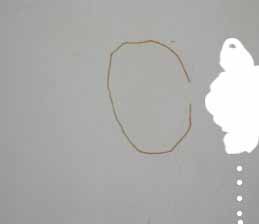
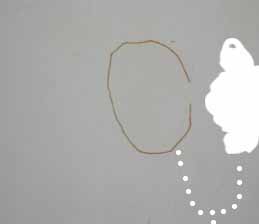
a new map for us?
starting from stains
marking the grey area
conquering the space
I had to chuckle at the idea of all those things sticking to me, and at the same time it’s terribly SCARY! My nature is being a collector of things I find interesting for their material or appearance or the memories they hold and keep me connected with. But for some time now I’ve been trying more to throw things out faster, delete more, and still incoming things with scarcity of time seem to keep the upper hand…
So let’s please make that a selective human magnet – only what does me good or what I can use! Thankfully the EU doesn’t have border controls anymore, so that I won’t have to declare what I have been collecting with my magnet!
Are you a ‘collector’, and if so what kind of things?
Warmly from a beautiful autumn Amsterdam,
Andrea
(Here’s one of my new ‘acquisitions’ from the summer which is now decorating my bathroom: a little children’s plastic crab I found in the sand when I went to San Diego’s Silver Strand Beach with my niece)
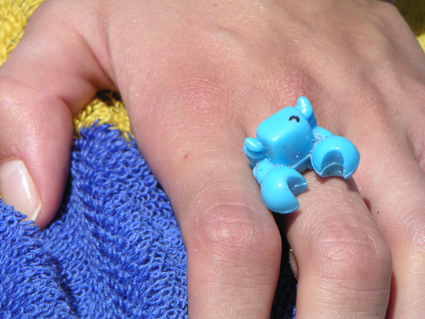
Mirla Fernandes
Dear Kajsa,
now the package is ready but the Post is on strike

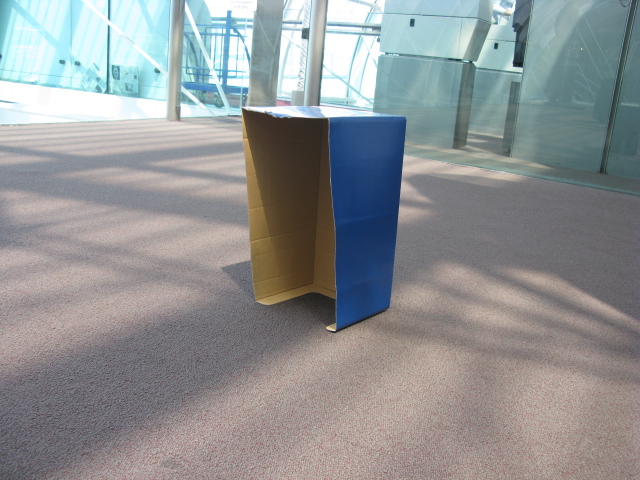
Dear Célio,
Thanks for your beautiful letter.
I have been living with the printed version of your letter for some days.
It’s laying on my worktable, taking the space of one unfolded sheet, and displaying a square of black traces within a bigger white square.
It was a very suitable first letter. That’s the feeling that I had while reading it. This letter is a real letter.
This blog seems a great river to me, and now, somehow, I need to find my (provisional) way to plunge into it. While I’m looking the water following its own direction, it comes visible to me the texture of time. Here I’m, mesmerized by the flow, knowing that the entry door will appear only with the decision to jump into it, but still trying to do so in an accurate way.
Terhi Tolvanen
Hi there!
Hope you are doing fine. Had some problems with the internet connection….. but now I’m back on line!
Cool, I will have a look of your pictures on the spanish side!!
get back to you soon,
Terhi
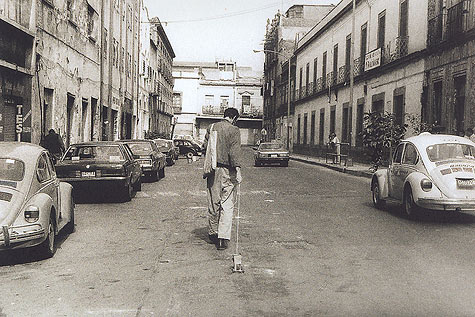
Hi Andrea:
Good luck with your two month residency in Germany (where are you going to be?), it will be very nice to hear how it’s to cross the border so often!
I’m posting a picture of Francis Alÿs and The collector / El colector.
In his actions, he is constantly moving, migrating, using the city as a 3D map. The city is the base to collect objects, or to disperse them (see The Paradox of Praxis ).
I ‘m imagining that you can attach a big magnet to you, so each time you cross the border, invisible, minimum, discarded objects get attached to you, as a translator of your experience.
© Foto: Francis Alÿs
The Collector/El colector (1991-1992)
Chequita Nahar
Hello Ketli,
how are you is evrything going well with your house moving? chequita
Hi everybody,
Some time ago I read a contention that Modernism in Latinamerica was a replica of their European & North American counterparts.
Brazilian artist of the 1920′s came up with an idea that settled any further debate on what this old dilemma. They founded a movement called Anthropofagia (Cannibalism). In order to be Brazilian, you must eat and digest all foreign influences. That’s fun.
Life in tropics and outside the centers of power, has given way to many contradictions and paradoxes in the global environment. And, indeed, reality over there surpasses imagination. Take for instance, these two pictures that were brought to my attention by my good old buddy, the artists and performer Cesar Martinez. On the right you see the work of world famous Italian artist on the left, the result of a night partying in Mexico City.
Maurizio Cattelan stirred up controversy with this sculpture of Pope John Paul II struck by a meteorite, the piece gave his career a boost in 1999. Drunk driver in Mexico killed a man before raming his RSV onto a sculpture dedicated to the memory of Pope J.P.II, on March, 2009. (see full article on: http://www.replica21.com/archivo/articulos/m_n/570_martinez_cattelan.html).
You have to marvel at the way that reality surpasses fiction and chance becomes the one and only way of relating life and art.
When it comes to finding the discarded object or creating a new one, do you wonder about these thoughts. What does an artist need to create or recreate, recycle or rebound.
|
|

 A boundary/border/frontière exists when territorial systems identified by their own sets of norms (cultural, legal, etc) confront one another.
A boundary/border/frontière exists when territorial systems identified by their own sets of norms (cultural, legal, etc) confront one another.



